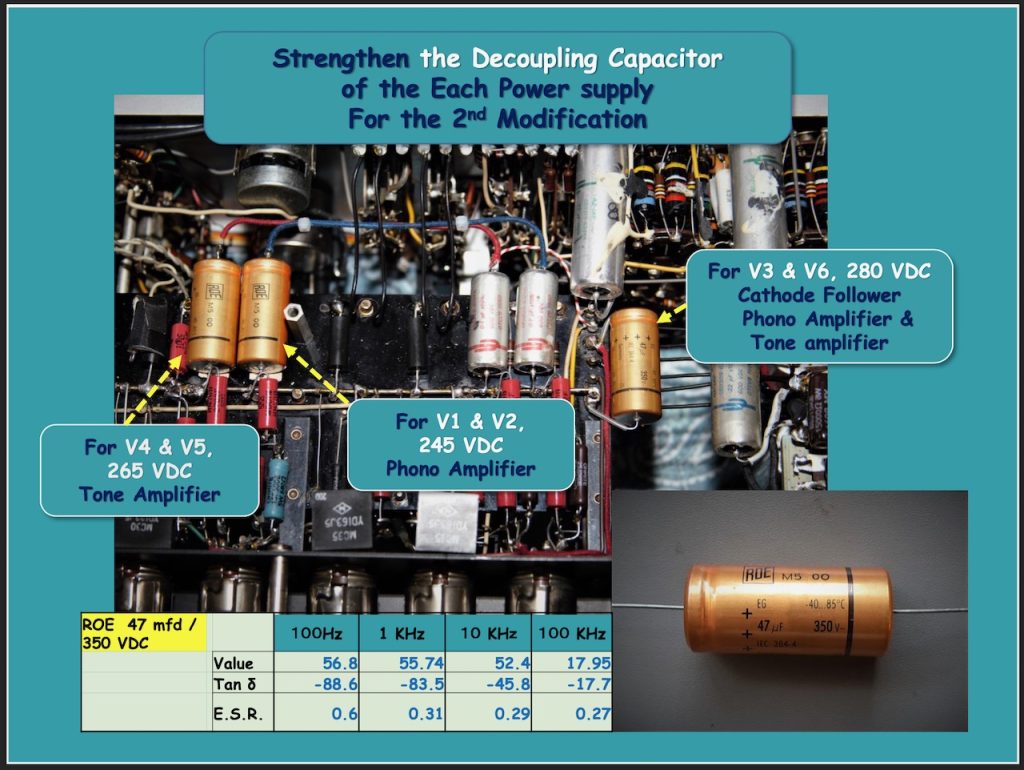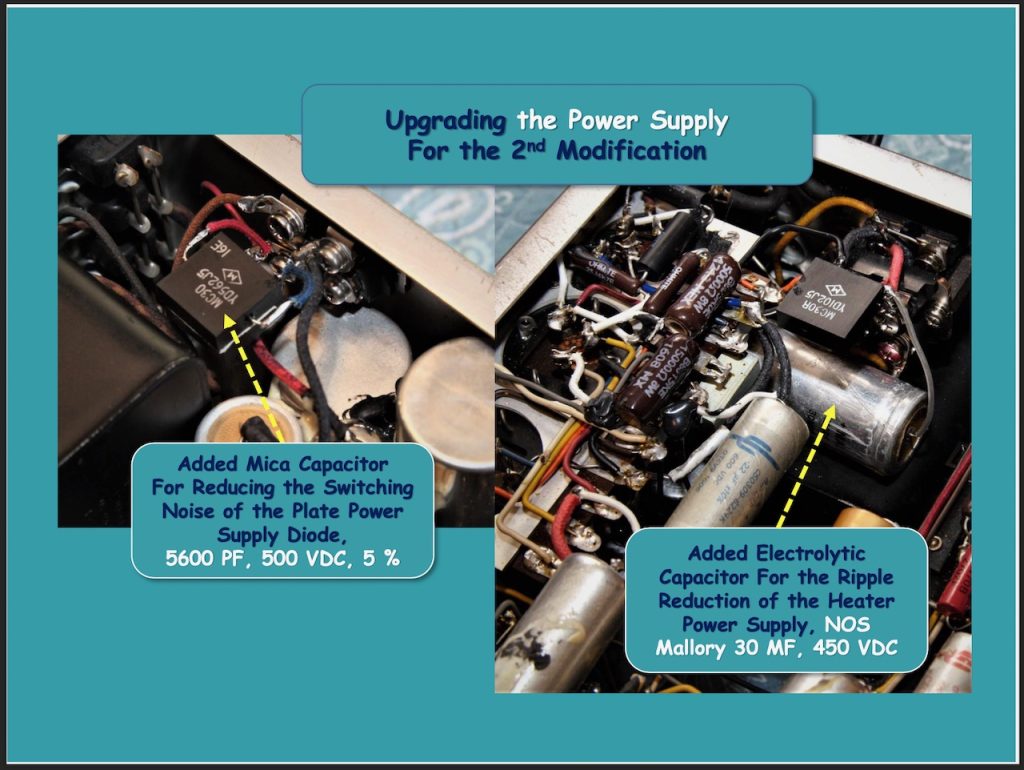Actually, I also thought that the combination of ESL-57 and F33REX could be very promising. The reason was that the beauty of F33REX lies in the expression of the sound field with a rich sense of openness and transparency, and I thought that the expressive tonal character with outstandingly lofty and delicate mid to high range was suitable for ESL-57. Above all, the advantage of F33REX was the feeling of pushing the low range softly forward, so it might be assumed that the low frequencies of the ESL-57 would be fully complemented or compensated. Here is the Roy-san’s first impression on 6th September 2017.
“The F33REX arrived safely yesterday. You did a wonderful job of boxing- very sturdy! I let it warm up for a few hours and then spent 2-3 hour listening. I imagine that the amp will need several hours of playing to break in but after about 2 hours it began to 'sing'."
"My initial impression was that the F33REX combines and extends the strengths of both with RSP-901EX and your modifications of my WE310A preamp. The first thing I noticed was the absolutely incredible expansion of image - the soundstage expands enormously behind and to the side of the speaker. Moreover, there is a newly found 'correctness' to the relation between image depth and dynamic range. I don’t know how to describe this but the relationship between depth and dynamic range of the music just sounds 'right'."
"The brain relaxes as it recognizes this. When I first started listening the music sounded a little like 'solid state' amplification. However after 2 hours the music 'relaxed' a great deal and started to sound more like 'tube' amplification. This was very reassuring. Like great tube amps the music revealed marvelous nuance and textures - but never calling overt attention to this. The 'flow' of the music became increasingly more fluid and relaxing. Yet the music has better definition in the bass and high frequencies like a solid state amp, but without any 'hardness' that usually comes with solid state amplification- very nice!"
"I am tempted to say that the F33REX portrays music in a new fashion, in a way that I have never really heard before. But, it is a way that brain recognizes as superior and closer to reality. I continue to use the word 'relax' because that is my physical reaction to music played through F33REX - I relax and enjoy the music! Tone is already very good, and seems to be improving as well. I will report back to you after several more days listening. Thank you, Mr. Yazaki, very well done! Sincerely, Roy.”
The next day, Roy reported me again as below.
“Last night I listened further to many favorite songs and now the F33REX begins to really sing! The vocals are 'opening' up just like they do on the Western Electric horns. The vocals have that open and nimble/dynamic quality like a real person singing in the room. Meanwhile the bass line is becoming more distinct and the overall 'balance' of the music is true to life - bass has increasingly more 'power/weight' as frequency goes lower. Tone is increasingly natural and full. The sound is 'full' and 'round' like a good tube amplifier but also clear and open like, maybe, a very good transistor amplifier. The F33REX drives the Quad 57 perfectly (with help of RSP-901EX of course).”
Of course, I was so delighted to hear his impressions but I was really surprised to know that the RSP-901EX, I called it the “Real-Sound Processor”, effectively improved the sound quality of his ESL-57 with its quite unique electrostatic driving system, which was unexpected for me as a designer.
Now, I should return back to the story of the modification of Roy-san’s Model 7. Approximately a year later, when modifying his Model 7 Replica, I decided to manage to bring out more open sound and clearer tone with richer resolution from his ESL-57.

To do so, first I tried strengthen the power supply and decoupling to improve the current supply capacity according to the music signal and thoroughly reduce noise. For that purpose, one more filter with a pair of wire wound resistor and electrolytic capacitor for plate power supply were added, and a few mica capacitors were soldered just after the output of diode.

According to the standard of my modification at that time, I replaced to Arizona's hermetic seal oil capacitors and SPEC MC-DA mica capacitors in the coupling circuits, and also introduced two types of custom-made mica capacitor, 5,600 pf and 1,600 pf in the EQ element. For the cathode resistor, which would be the most influential resistor for the sound quality, I replaced to the Ohmite WHE type.
Well, I wanted to or had to challenge one more thing this time that was to replace the existing solid carbon resistors to the highly accurate metal film resistors with favorable sound quality, in order to get out of the minute level of cloudiness in the sound. I thought that it would be one of the final obstacles to bring out the full potential of ESL-57, which enables beautifully clear and transparent spatial expressive power.
Certainly, the metal film resistors seems to be a very excellent resistor in view of its physical characteristics. It was said that the noise level of a metal film resistor is 20 dB or more lower than that of carbon-based resistors. In addition, the resistors has the excellent characteristic for the temperature dependence of the resistance value. And so I think it would have been better for me to make more use of this type of resistor. However, I think that the reason why I didn't do that was that I emphasized in my mind the negative factor in terms of sound quality.
It was true that the metal film resistors that I had experienced had clear sound image, and many of them made me feel the extension of the high range far more than carbon-based, solid carbon resister. But the negative factor would be the sound character lacked a sense of density in the mid to mid-low range.
This might be due in part to the fact that most of the metal film resistors currently available on the market are less than 1W type, and so I couldn’t feel rich density of midrange and the dynamic sound that I feel with high quality wire-wound resistors, I supposed.
But under such circumstances, I once ordered a few resistance values of custom resistor, 1W from TEPRO in Florida when I was a member of SPEC Corp. in search of a metal film resistor with high quality sound quality.
As a result, the quality of this metal film resistor, which was designed being extremely low noise for audio use, dispelled the sound quality concerns I had felt with this type of resistor.
It really felt to me that the energy balance was in place over the entire range, not only the beauty of the high frequencies.
Therefore, in general audio use, it was clear that in terms of the sound clearness, it completely surpassed the Allen Bradley solid carbon resistor or usually available resistors, I had tried. However, compared to the well-made wire-wound resistor such as Ohmite WHE, sorry that I had the impression that the feeling of richness and dynamism in the mid-low range was very slightly inferior.
At that time, I just found or come across very rare NOS 1M ohm / 1W, specially made glass-coated metal film resistor by CGW, which seems boast of excellent appearance, highest reliability and accuracy at the one of the few NOS parts shops in the Akihabara area of Tokyo. It was apparent at a glance that this resistor was not consumer use parts. Of course, I decided to use the resistor for replacing the existing solid carbon resistors on the signal circuit of Roy-san’s Model 7, the 5 pcs per channel, total 10 pcs. Surely, the sound tendency of this NOS metal film resistor was completely different from the metal film resistors I had experienced so far. And my friend Kajiwara-san’s own retest with using his Model 7 also proved the splendor of this resistor. Very luckily enough, I was able to find a metal film resistor with long-term reliability, accurate resistance, and excellent sound quality comparable to Ohmite WHE.
Well, you can read Roy-san’s open impression of this modified Model 7 Replica on Jeff's Place HERE.
It's been almost three years past since this blog post, and I hope this chapter would be some technical commentary on the modification of Roy's Model 7 Replica. And this 10 pcs of glass-coated metal film resistor by CGW could surely have positive impact for the sound quality of Roy-san’s Model 7, I understand.
Now, to summarize what I learned here, I was fortunate to find and have a chance to try the old NOS US military use or industrial use metal film resistors with a relatively high power capacity of 1W or more, which was developed with an emphasis only on reliability and ultra-low noise. And it was the fact for me that the resistors in those applications had rather excellent sound quality for audio use.



























